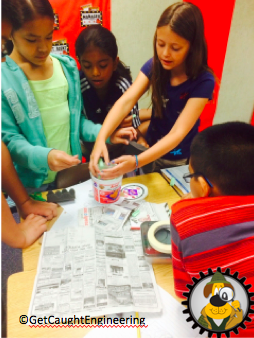Stem-i-fying the Classroom
Finding Room on Your Plate for Engineering
(We were recently invited to do a guest blog on STEM and literature for Rachel Lynette’s wonderful Minds in Bloom site at http://www.minds-in-bloom.com. We were delighted to share our ideas on integration of engineering into other subjects)
When we first started developing an engineering program for our school, our administrator was very supportive. He only had one request: “ Please don’t tick off the staff!”. We knew that our greatest challenge would be assuring the faculty that this would be a great addition to their classroom, but not an “add-on” to their already overloaded program. And so began our slow roll out of STEM lessons that could be integrated into the curriculum. Over the years we have found ways to integrate engineering lessons into history, math, health, art, and of course science. But literature has been our biggest STEM integration success due to the fact that literature is an integral part of the elementary school curriculum and usually teachers have a large block of time for language arts. Literature has the potential to present situations that can challenge students’ imaginations. Stories can serve to encourage student to begin to problem solve, generate design proposals, and make connections to engineering. So how do we start? We begin with a “what if…?”- Discuss the plot and characters of the story. Can we improve the situation in the story?
- What problems do the characters encounter? Can we develop a product, tool, or system to help them?
- Is there an item mentioned in the story that we can redesign or improve?
- What science or math can we connect to the story?
- Think about what happened after the story ends?
What They Say

Wendy came to Bellevue Arts Museum to co-lead our Full STEAM Ahead! Summer Camp in August 2014. This camp was a huge success thanks to her expertise, experience, and warmth working with the campers throughout the week…
MEGAN DYE
Educational Outreach Director, The Bellevue Art Museum, Bellevue, Washington







